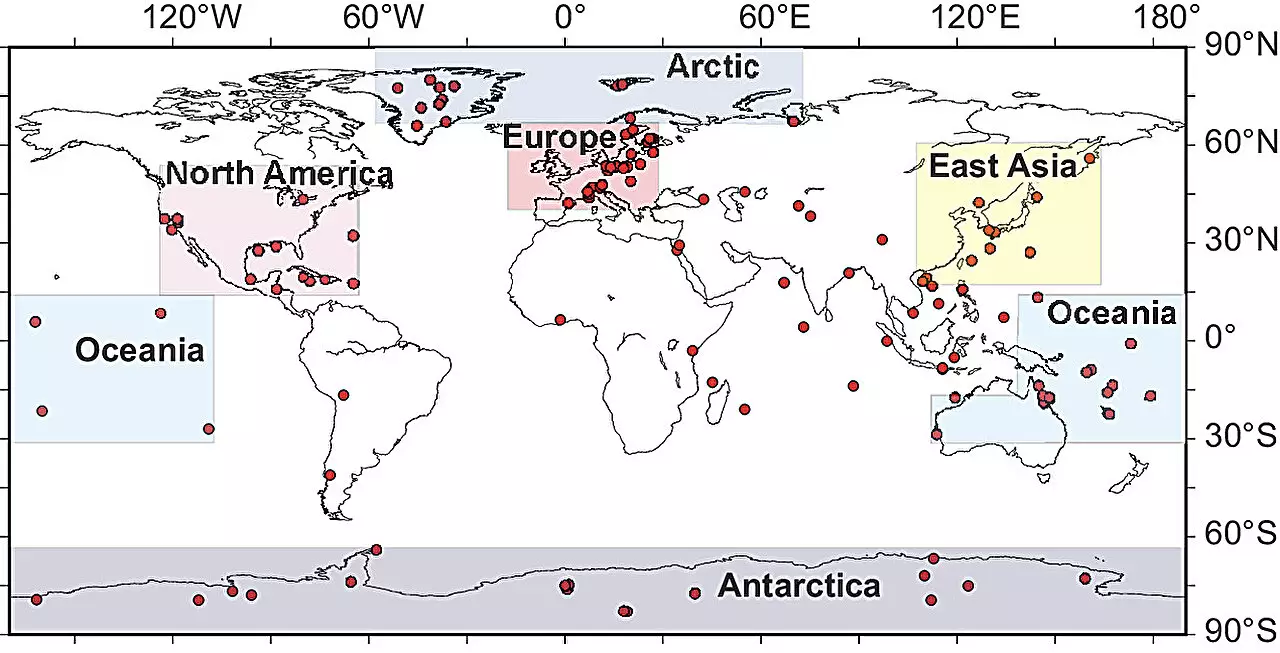The proposal of the Anthropocene as a distinct geological epoch highlights the profound impact humans have had on Earth’s systems. The concept emerged prominently in 2002 when Nobel laureate Paul Crutzen posited that the Holocene—a relatively stable period of climate that has allowed human civilization to flourish—had ended, supplanted by an era defined by anthropogenic influences. Since then, scientists and researchers have wrestled with the implications of this new epoch, endeavoring to pinpoint its origins amidst various logistical, scientific, and ethical dilemmas.
The significance of establishing a starting point for the Anthropocene cannot be overstated. It carries not just academic weight but also social and political consequences, as it prompts humanity to reflect on its role in the degradation of natural systems and the extensive changes that accompany population growth, technological advancements, and industrial development.
A recent paper published in the *Proceedings of the National Academy of Sciences* by a coalition of Earth scientists from prestigious institutions, including the University of Tokyo and The Australian National University, rekindles the debate on when the Anthropocene began. The researchers examined three key contenders as potential markers for this new epoch: the late 1800s, the early 1900s, and the 1950s. Each of these periods represents significant shifts in human activity and its environmental repercussions, though their immediate impacts and lasting legacies differ greatly.
The late 1800s marked the dawn of the Industrial Revolution, characterized by monumental shifts in production processes and urbanization, resulting in the widespread dispersal of lead and other pollutants. In contrast, the early 1900s saw unprecedented increases in black carbon emissions, significant alterations in global pollen patterns, and the disruption of various ecological networks due to burgeoning industrial activity.
However, the research group ultimately concluded that the middle of the 20th century is the most compelling start date for the Anthropocene. This assertion is rooted in evidence of significant and measurable global changes occurring during this period—an era rife with organic pollutants, pioneering plastic use, and the harrowing onset of the nuclear age. Notably, this was also when the fingerprints of climate change began to indelibly mark the Earth, signaling a transformative shift in both the environment and human society.
The 1950s emerged as the favored candidate due to the undeniable and pervasive nature of its environmental impact. It was during this decade that human activities resulted in permanent changes to the global environment, such as the proliferation of microplastics and widespread nuclear testing, which left traceable isotopes around the globe. The research team signals that the changes set into motion during the 1950s are likely to persist for millennia, if not indefinitely. They argue these transformations forge a distinct boundary between the Holocene and the Anthropocene, suggesting an irrevocable shift in Earth’s systems.
In addition to pollution and isotopic changes, the onset of significant global warming and the commencement of climate change discussions can be traced back to this period. The environmental repercussions have since escalated into a full-blown climate crisis, evidenced by rising sea levels, shifting weather patterns, and increasing frequency of extreme weather events.
Recognizing the Anthropocene’s commencement in the 1950s carries profound implications for our understanding of history and our responsibilities as stewards of the planet. The acknowledgment that we have entered an epoch directly influenced by human activity signifies a call to action. It serves as a potent reminder of the enormity of the challenges humanity faces in addressing climate change and the degradation of natural systems.
Moreover, establishing a clear beginning for the Anthropocene can foster greater awareness and urgency in tackling these pressing global issues. It encourages policy-makers, communities, and individuals to reevaluate their relationship with the environment and to implement measures that could mitigate further damage.
The exploration of when the Anthropocene began is not merely an academic exercise; it is a vital inquiry informing our collective existence and our place within the Earth’s complex systems. The scientific community’s ongoing discussions around this epoch will significantly shape humanity’s ability to confront the challenges posed by our increasingly interwoven relationship with the environment.

